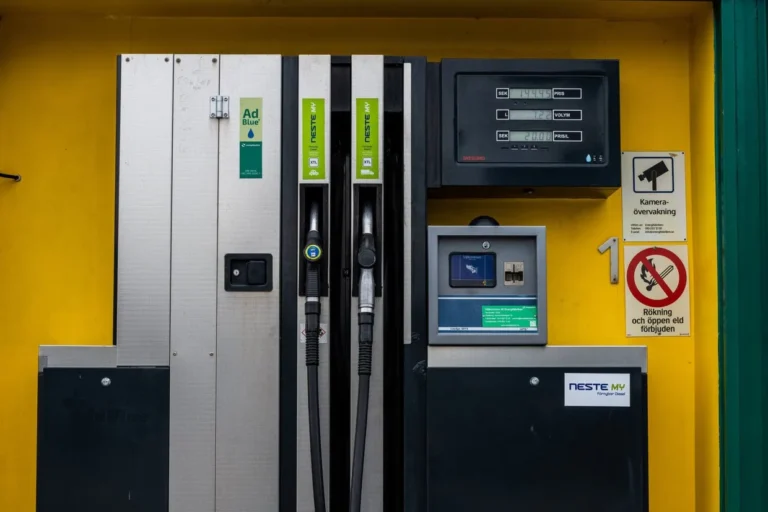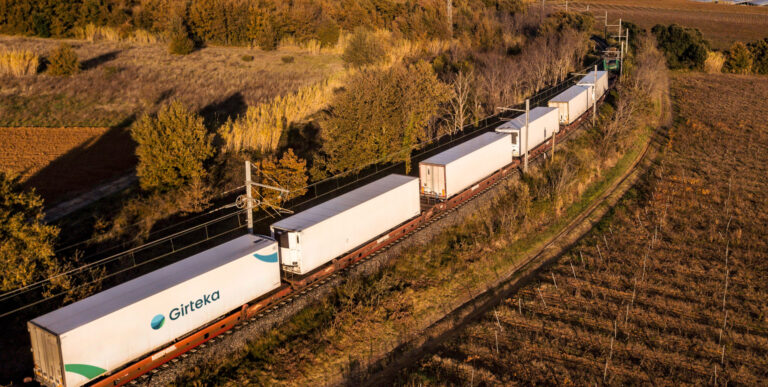Retail Sales Decrease in Q1 Amid a Drop in Fuel Prices and Increasing Interest Rates
In the vast realm of logistics, the macro environment plays a crucial role in shaping the fortunes of businesses and industries. Today, the logistics sector finds itself grappling with a challenging macroeconomic environment, characterized by decreasing sales, fluctuating fuel prices, continuous driver shortage, rising interest rates and falling shipment rates. It is a time that tests the agility and adaptability of companies as they must continually adjust their strategies to remain competitive.
Decreasing Sales
When we discuss a macro environment, we are referring to the large-scale economic trends, social changes, technological progress, and political landscape that can influence a business or an industry as a whole.
The macro-environment in the logistics sector today appears to be characterized by decreasing retail sales year-over-year (yoy) in the first quarter of 2023, particularly in major markets like Germany, France, and Sweden.
As retail sales decrease, this implies that consumer spending is falling, which is a critical factor as it accounts for a significant portion of economic activity. Lower demand can be a challenging scenario for carriers and logistics companies, as they need to strike a balance between reducing their prices to remain competitive and maintaining their profitability.
One of the solutions is diversifying services or looking for ways to innovate and offer added value to their customers, like real time visibility, flexibility based on capacity or sustainable solutions.
In times like these, businesses need to adapt to changing conditions. For example, if retail sales are down, there might be an increased demand in other sectors like e-commerce, especially if consumers are shifting their buying behaviour online due to changing circumstances.
Low Fuel Prices
Fuel prices have a significant impact on the logistics and transport industry because fuel is one of the major operating costs for these companies. According to the European Commission’s Weekly Oil Bulletin, in the first half of 2023, fuel prices have decreased substantially – by approximately 15-20% compared to the same period last year.
Fuel costs are often referred to as “variable costs” because they can change dramatically based on global market conditions and can significantly fluctuate from month to month. Unlike fixed costs, such as leasing or staff salaries that remain constant regardless of business volume, variable costs are directly tied to the level of business activity. In the case of logistics companies, the more goods they transport, the more fuel they need, and the higher their fuel costs will be.
The drop in fuel prices comes as a positive factor amid the overall negative macroeconomic environment presented earlier. However, businesses also need to be aware that just as fuel prices can decrease, they can also increase again. In today’s vulnerable economies, each scenario is possible.
Continuous Driver Shortage
The issue of driver shortage has been a significant challenge for the logistics industry in Europe and worldwide. As statistical data shows, Europe is facing a deficit of around 450,000 to 480,000 drivers.. Several factors contribute to this situation:
- Retirement: Many experienced drivers are reaching their retirement age and choosing to retire rather than continue working. This natural attrition can significantly impact the available workforce, especially when 1/3 of today’s drivers are above the age of 55.
- Low interest among younger generations: Truck driving and similar jobs might not appeal to younger generations, who often prefer professions with more flexibility, less physical strain, and better work-life balance, as demographic statistics clearly indicate.
- Business failures and exits: Some smaller transport and logistics companies might have exited the market due to economic hardships, especially given the declining retail sales environment. When these businesses close, their drivers might not necessarily move to other driving jobs and can exit the pool of available drivers.
As a result of these challenges, logistics companies are struggling to maintain adequate staffing levels, which can limit their capacity and impact their service levels. In times like these, flexibility and capacity due to scale become an advantage.
To tackle this issue, logistics companies might need to implement strategies such as improving working conditions, finding new areas and places to attract drivers, mainly from outside the EU, or investing in driver training.
Money Flow
The cost of money, also known as aninterest rate, is the amount charged by lenders to borrowers for the use of money. In the last 6 months the European Central Bank (ECB) has been increasing interest rates. This move can have several impacts on logistics businesses, especially on:
- Operational cash flow
- Investments return management
- New loans and financing
According to economic indicators, it seems like interest rates are expected to continue to rise in the upcoming quarters (Q3 and Q4). This means that the challenges mentioned above could intensify in the future.
However, while rising interest rates can pose challenges, they also force businesses to operate more efficiently and make more careful financial decisions. This can ultimately contribute to a healthier and more resilient logistics sector in the long term.
Decreasing Shipment Rates
The decrease in average shipment rates from the record highs of last year’s Q3-Q4 period by approximately 9-15% (depending on region) is influenced by various factors:
- Stabilizing fuel prices: As mentioned earlier, fuel prices have seen a significant reduction. Since fuel is a major operational expense for logistic companies, this reduction directly impacts the cost of transporting goods.
- Capacity reduction in Europe: When smaller companies exit the market or reduce their truck capacity, this leads to a reduction in overall freight capacity. However, given the decreased retail sales and the reduced demand for goods transportation, this might not have resulted in a change in prices. Instead, the diminished demand might have kept prices from rising and helped stabilize them.
The combined impact of these factors appears to have contributed to a decrease in shipment rates. While decreased shipment rates can be beneficial for customers and help to stimulate demand, they can also impact the revenue and profitability of logistics companies.
Furthermore, it is crucial for these companies to keep an eye on the market and economic indicators, as changes in circumstances such as a rise in fuel prices or a recovery in retail sales could necessitate adjustments to their pricing and operational strategies. In a dynamic market environment, agility and adaptability are key.
The logistics sector is navigating a challenging macroeconomic environment, marked by declining retail sales in major markets and a significant shortage of drivers. On the upside, a reduction in fuel costs offers a reprieve. However, the increasing interest rates present potential issues for operational cash flow and investment management.
Amid these dynamics, average shipment rates have dropped due to stabilized fuel costs and reduced freight capacity in Europe. In response to these shifting circumstances, the sector’s agility and adaptability are being tested as companies need to continuously adjust their strategies.
Justinas Miškinis
Head of Finance, Girteka Nordic










